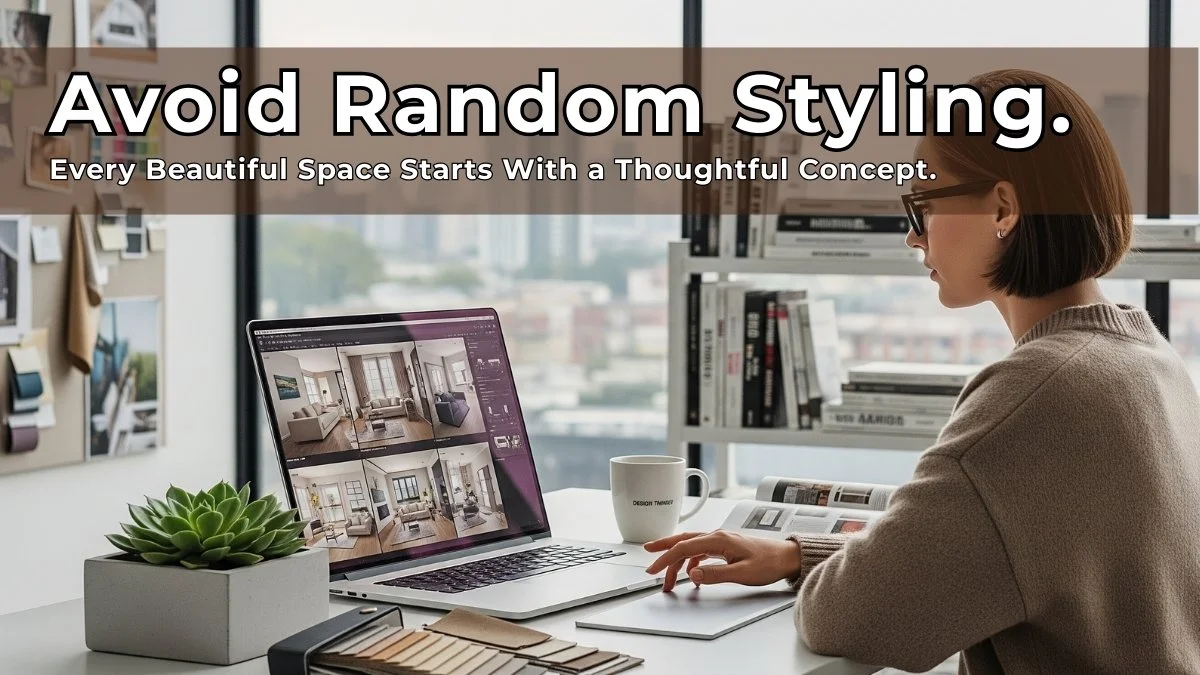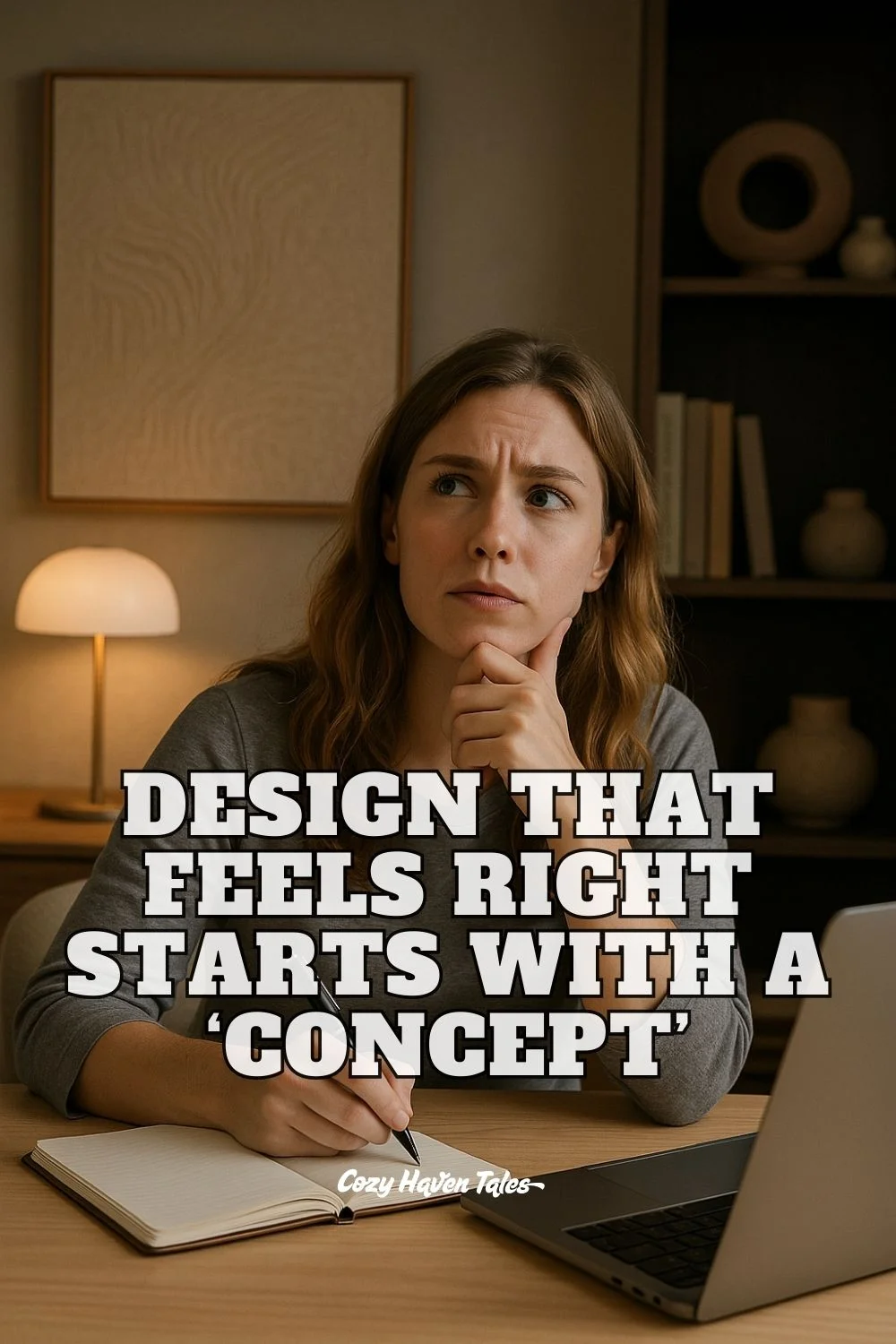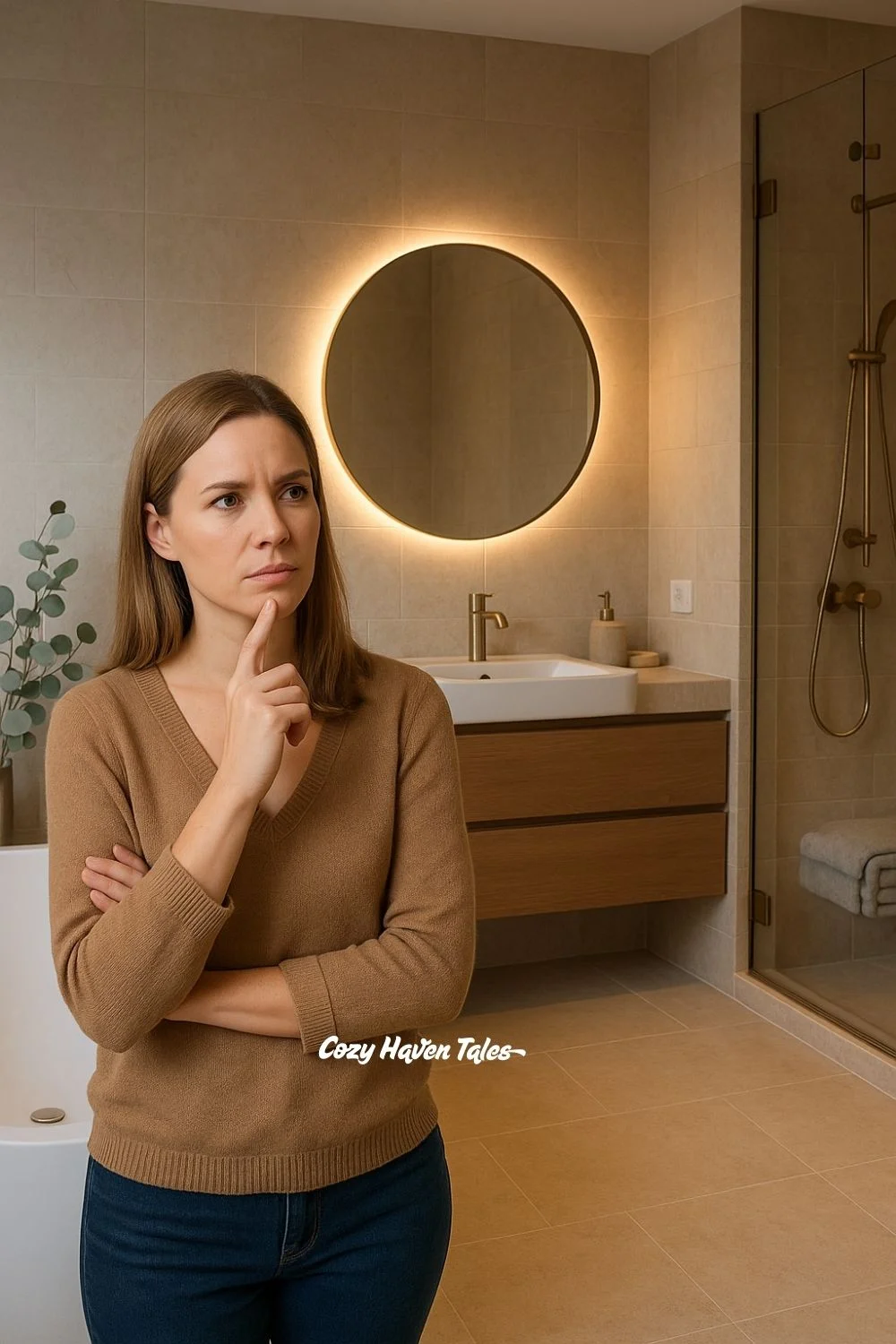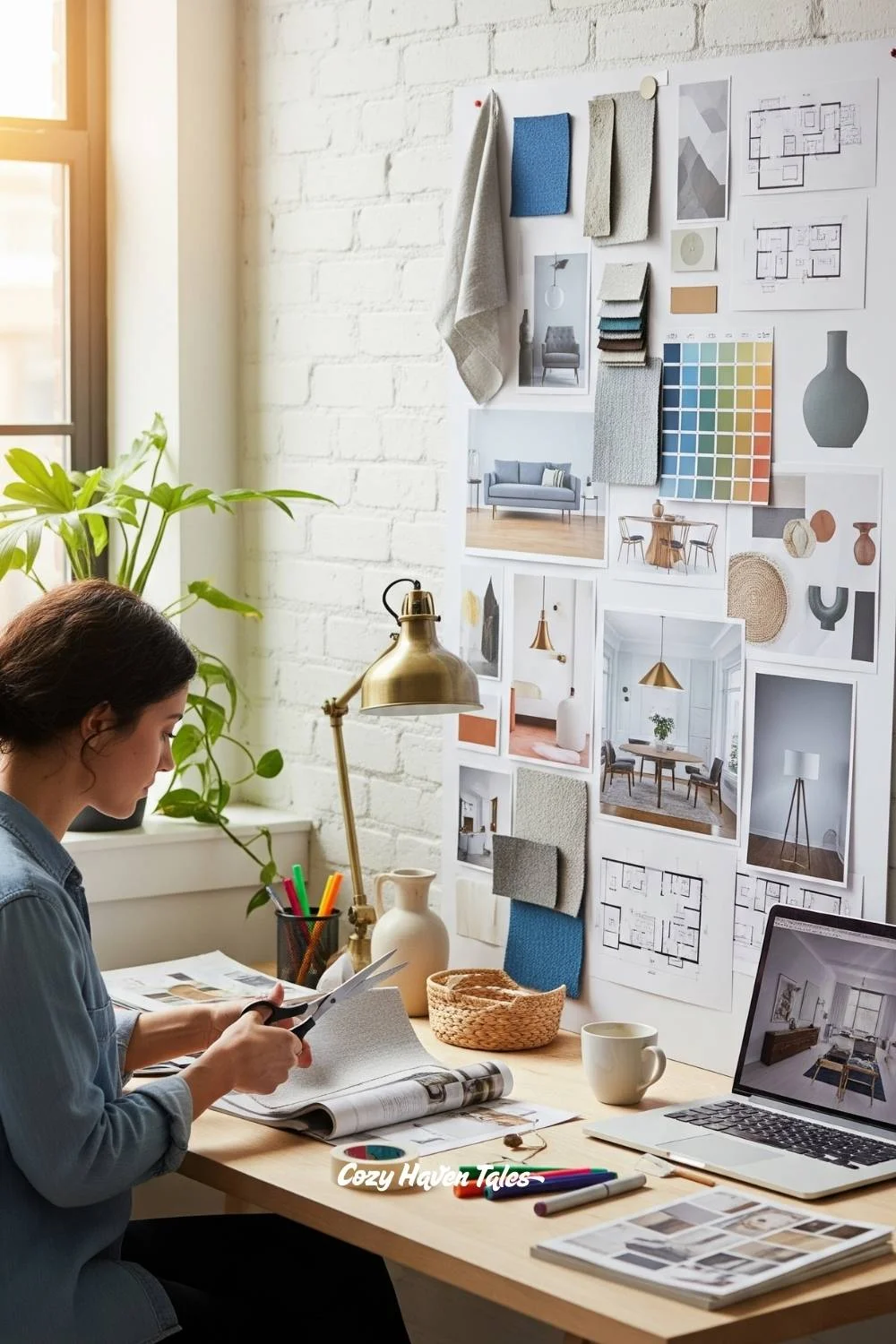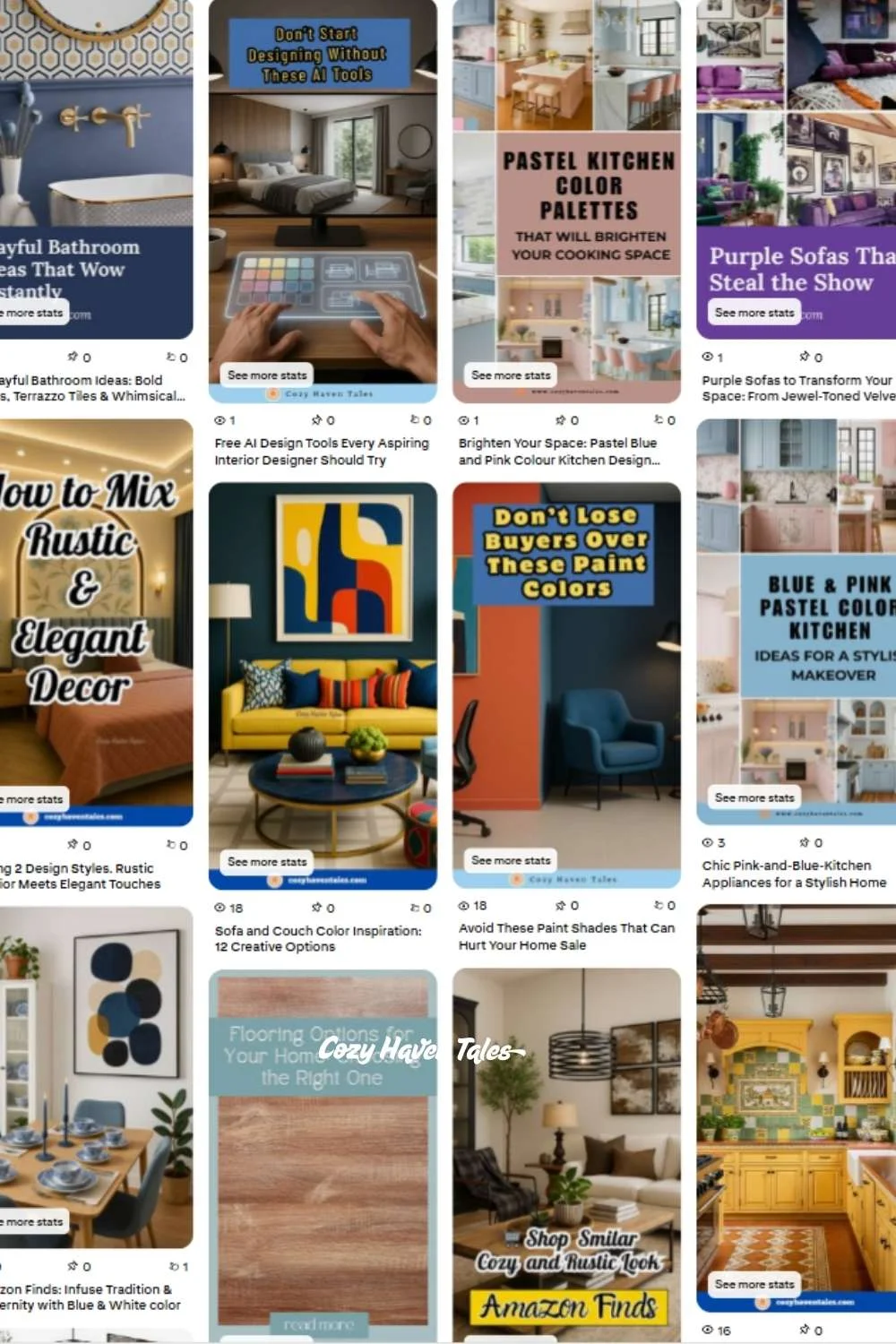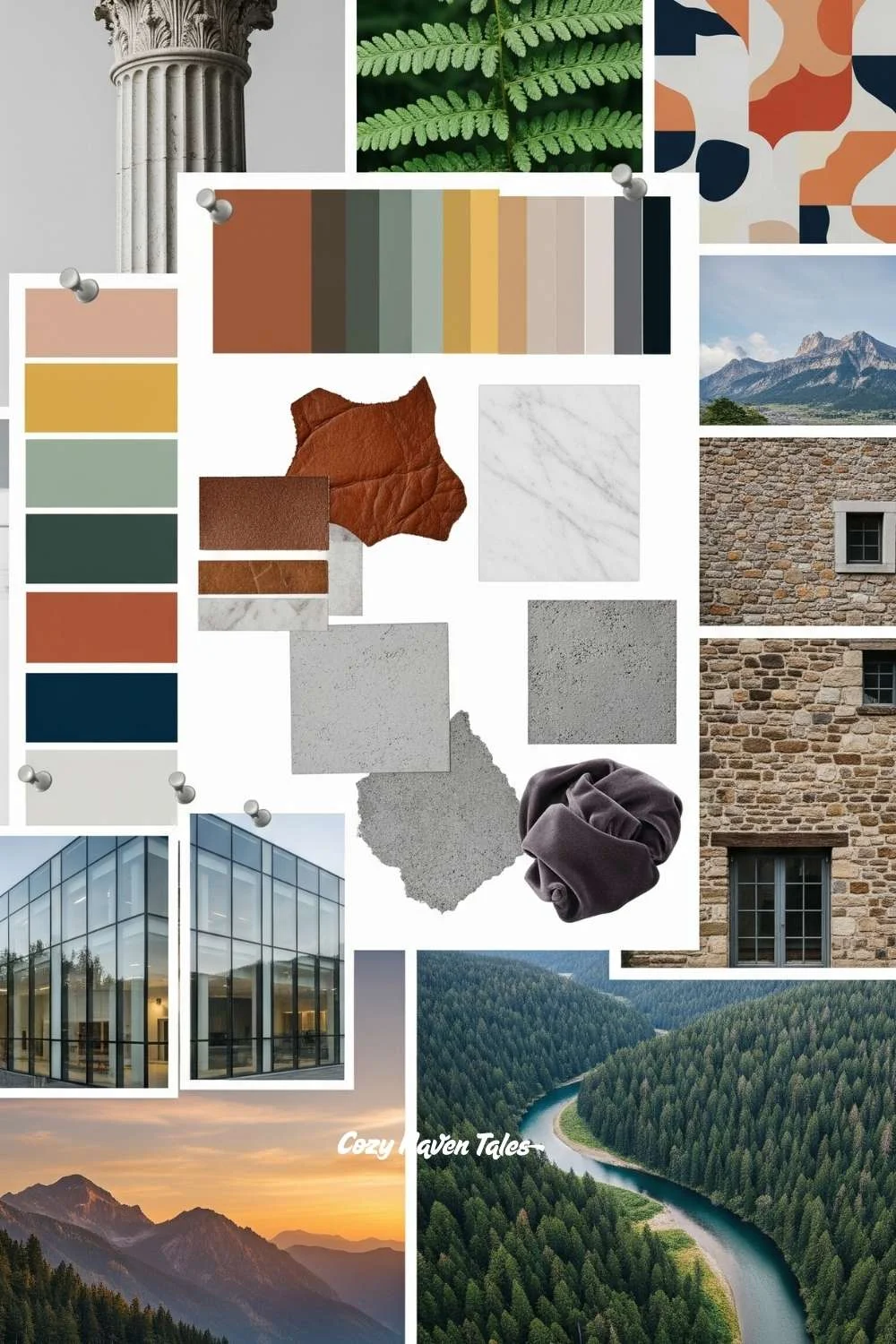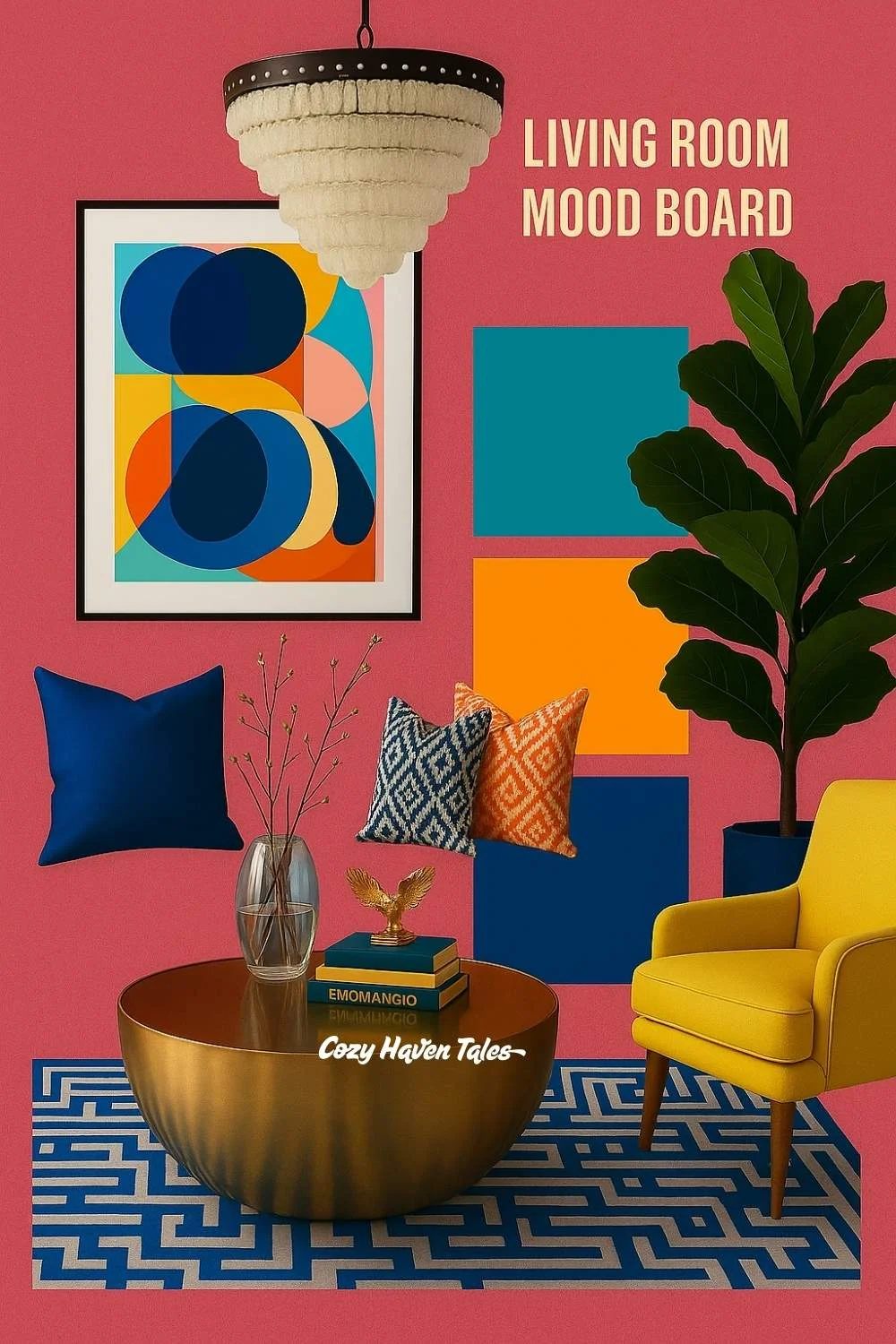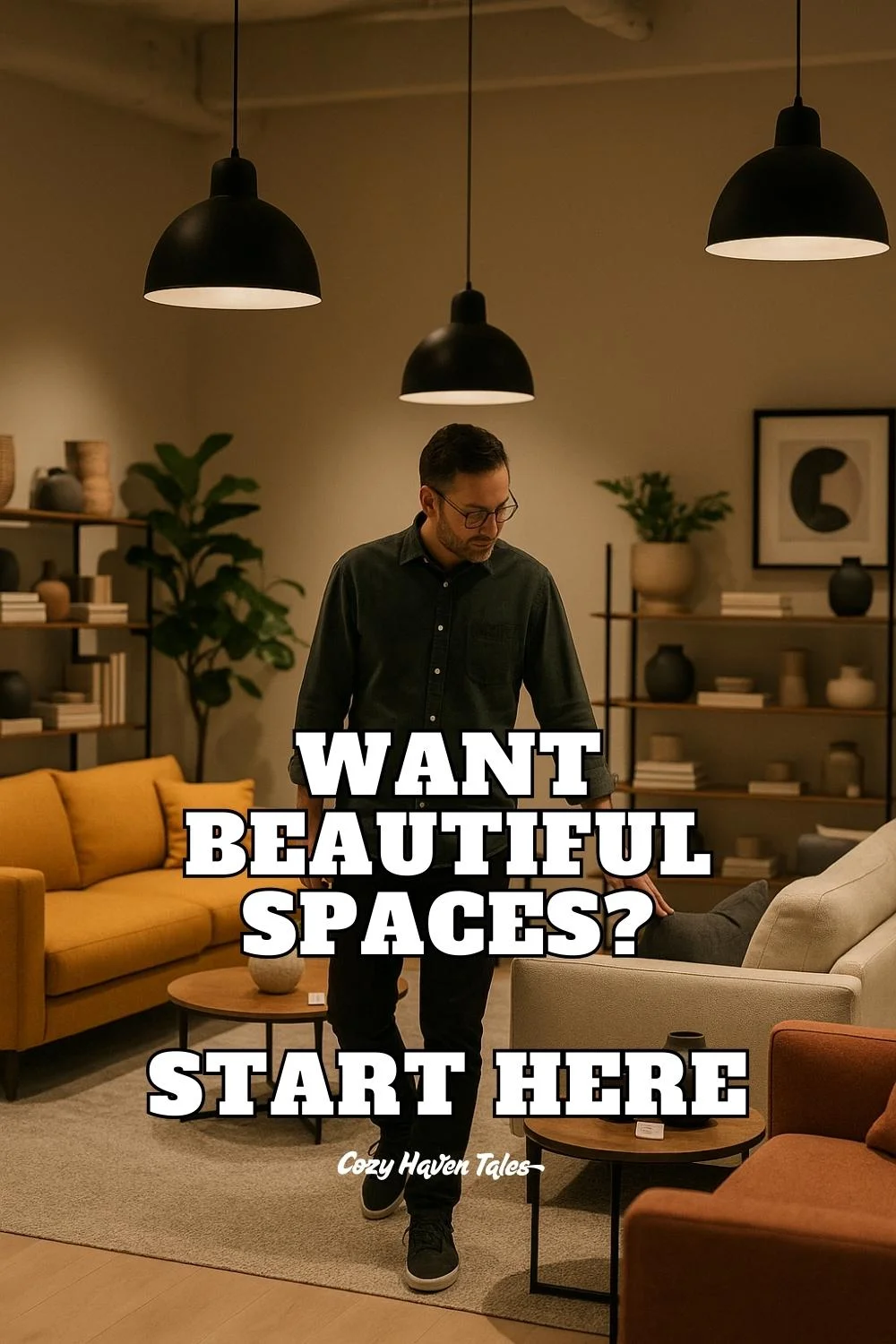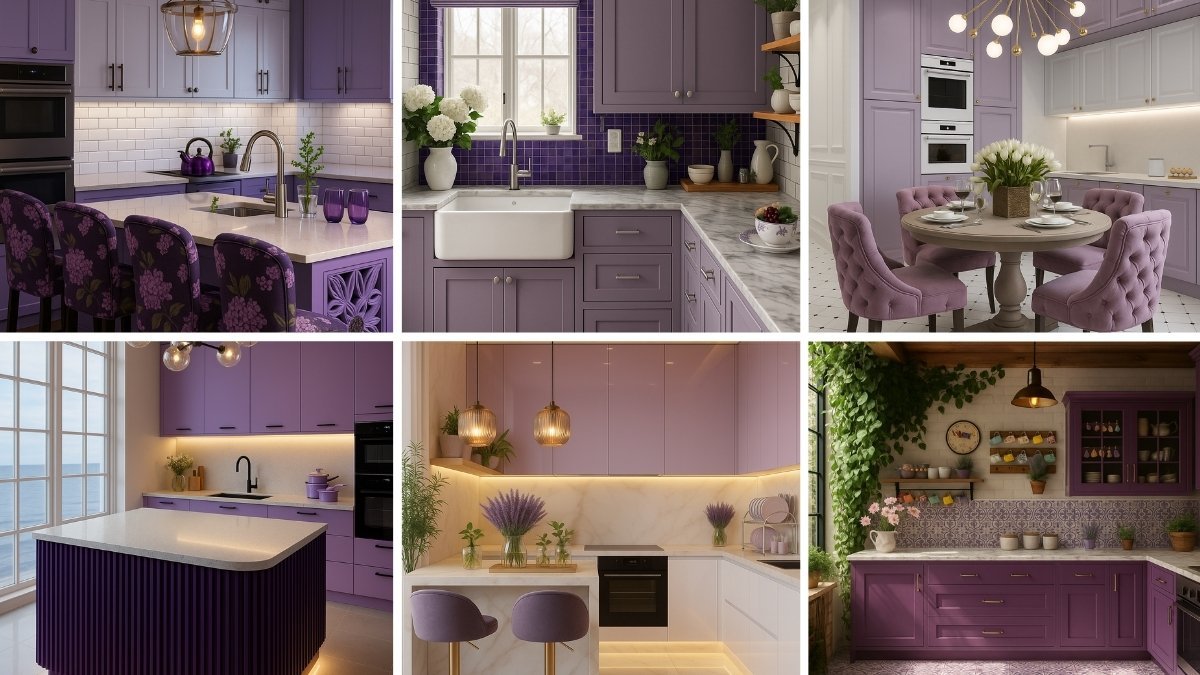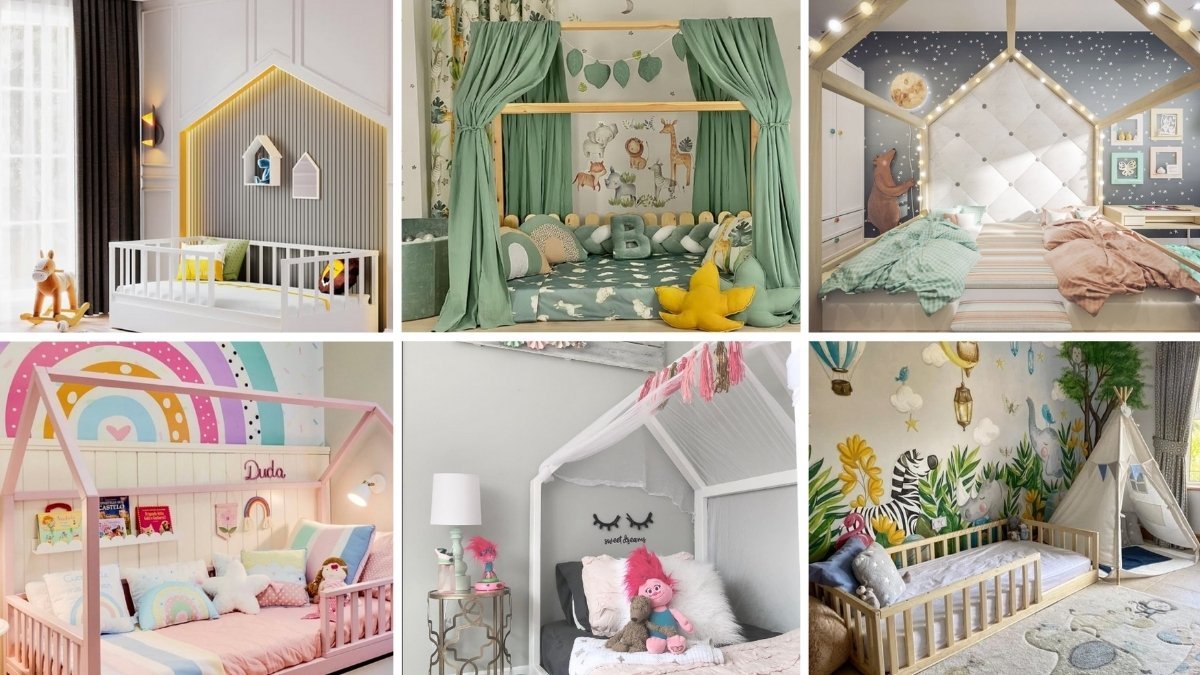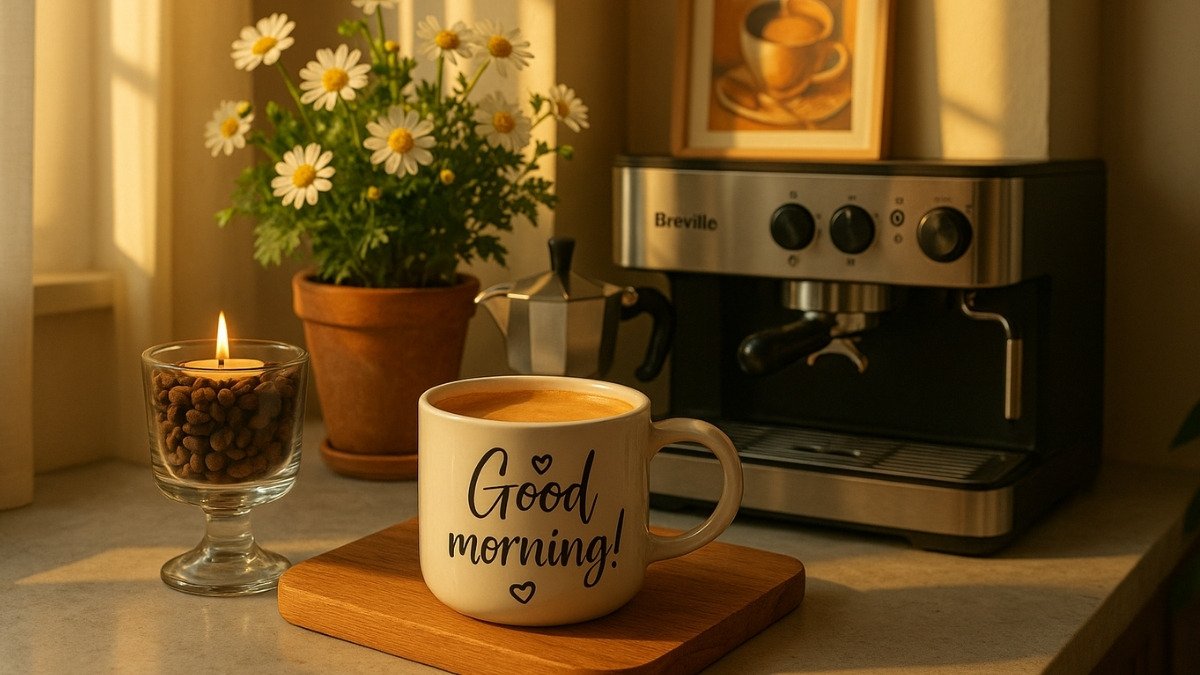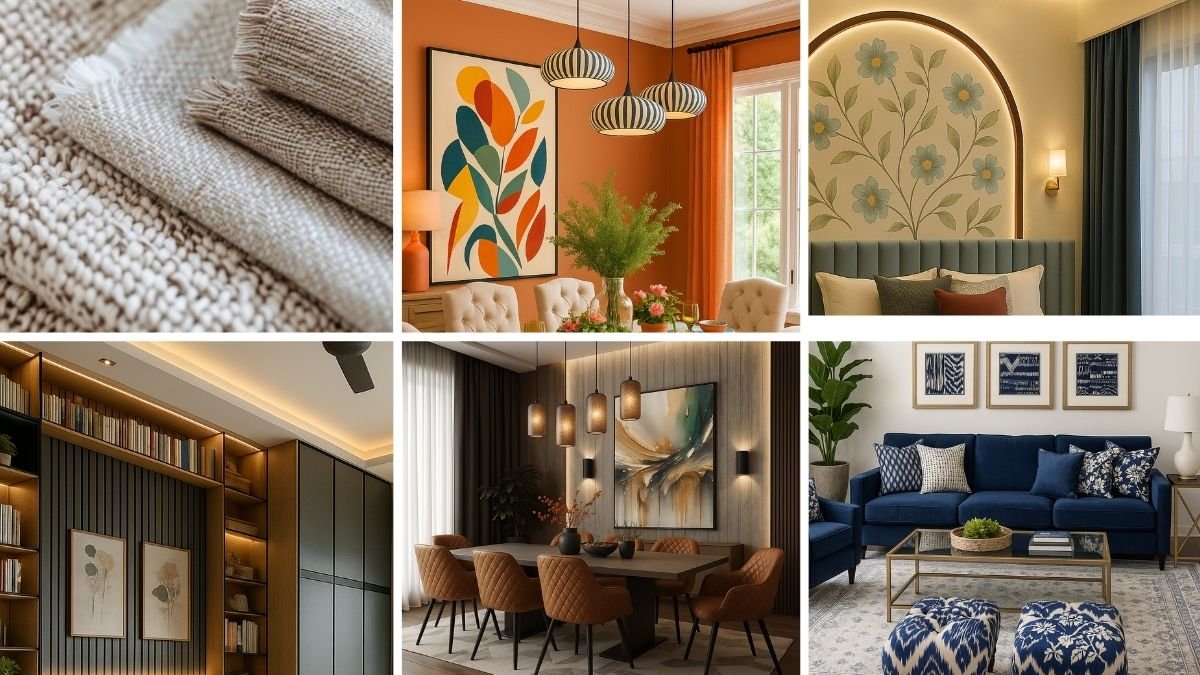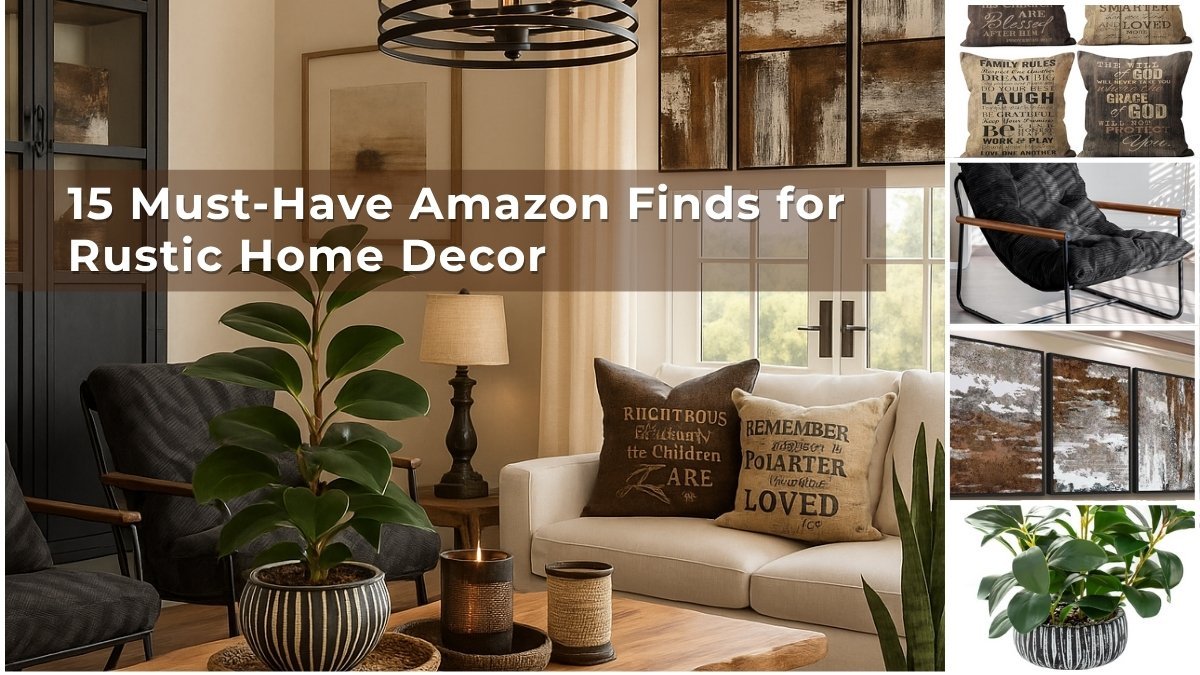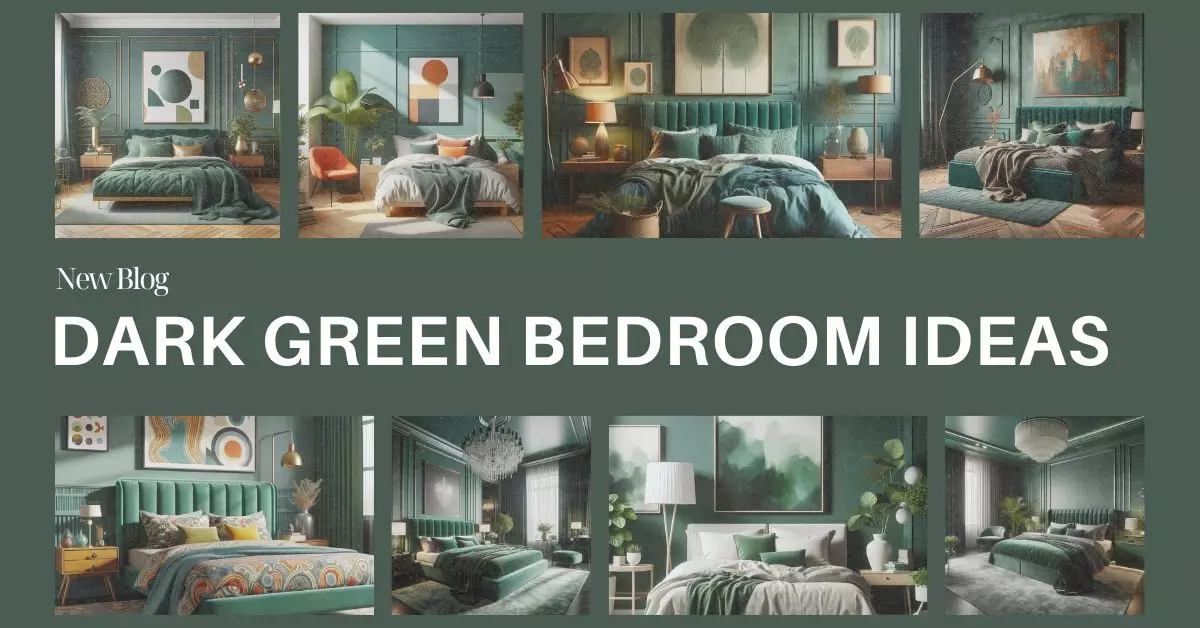You can have the perfect floor plan, the latest style, and a trendy color palette—but something still might feel off.
That’s often because what’s missing isn’t furniture or finishes—it’s a clear design concept.
A strong concept ties everything together. It adds consistency, character, and intention to every detail. With a guiding idea in place, the space feels cohesive—not just designed but well thought out and emotionally grounded.
Readers Also Enjoyed:
- Principles of Interior Design to Make a Room Feel Just Right
- How to Find Your Personal Design Style—and Finally Love Your Home
- Paint Colors to Avoid When Selling Your Home
What Is a Design Concept?
A design concept is the big idea that informs and influences your entire project.
It’s not just choosing “boho” or “mid-century modern.” It’s the feeling you want to evoke, the lifestyle you’re enabling, and the story you’re visually telling. It combines mood, purpose, and personality to create a cohesive experience.
Think of it as the invisible thread that connects colors, textures, furniture, and layout.
It answers questions like:
- What should the space feel like?
- What are the practical needs and emotional desires of the user?
- What design language—colors, materials, forms—can best express that?
📌 Example: The “Desert Retreat” concept might feature a grounded palette of sand, clay, and stone, natural materials like linen and cane, and curved organic forms. It’s not just about visuals—it’s about evoking warmth, solitude, and connection with nature.
How to Develop a Design Concept From Scratch: A Complete Guide for Aspiring Designers
Whether you’re working on a real client project or refining your personal portfolio, developing a concept from scratch is the bridge between creativity and clarity. And just like any beautiful interior, it begins with a well-crafted foundation.
Let’s walk through the process—step by intentional step.
Step 1: Define the Purpose of the Space
Before diving into design, step into the shoes of the user. Every great concept starts by understanding how the space will be lived in.
Ask yourself:
- Who is going to use this room?
- What will they do here?
- What do they want to feel—energized, calm, cozy, inspired?
Real-Life Application:
A corporate office lounge might aim to promote creative collaboration. The design concept could include modular seating, writable walls, and a cool-neutral palette paired with energetic accents like burnt orange or teal.
In contrast, a luxury bathroom designed for a couple may lean toward a spa-like feel—with limestone finishes, brass fittings, eucalyptus scents, and dimmable lighting. Here, serenity and indulgence define the concept.
🎯 The goal: Align design with function, emotion, and daily rhythm.
Step 2: Gather Inspiration and Ideas
Now that the purpose is clear, it’s time to gather inspiration. This step is about discovery, not decision-making.
Sources to Explore:
- Pinterest boards: Pin freely—this is about instinctive attraction.
- Travel experiences: Think Moroccan courtyards, Japanese ryokans, or Tuscan villas.
- Art and fashion: Study color blocking, textures, or layering in runway shows and galleries.
- Materials and nature: Driftwood, terrazzo, moss green leaves, or warm clay soil.
- Architectural references: Curved archways, coffered ceilings, steel-framed windows.
✨ Don’t restrict yourself to interiors only. A cloudy seascape, a film still, or a vintage perfume bottle can spark your unique concept.
Step 3: Find a Central Theme or Mood
Once you have a collection of ideas, step back and observe the patterns. What keeps appearing? What vibe are you drawn to?
This is where you name your concept.
Try This:
Look for repeated elements—colors, materials, shapes—and distill them into a theme.
- A warm minimalist concept might combine ivory, ochre, and light oak.
- A bold eclectic space could pair abstract art, jewel tones, and vintage furniture.
🏷 Give your concept a name: “Midnight Garden,” “Urban Nomad,” or “Soft Brutalism.” Naming makes it easier to remember and communicate.
Case Example:
A client who’s a ceramic artist working from home might inspire a concept called “Clay & Calm”—a serene yet earthy interior with handcrafted elements, sun-washed palettes, open shelving for display, and tactile materials like jute and rattan.
Step 4: Translate Your Concept Into Visuals
Now you make your mood visible.
Create a concept board (either digital or physical) that includes:
- Color swatches and finishes
- Flooring and furniture materials
- Lighting references
- Hardware and accessories
- Inspirational quotes or lifestyle shots
- Architectural shapes
🧩 This board becomes your anchor, helping you evaluate every future decision. If something feels off, revisit this board.
You can use Canva, Milanote, or Pinterest to create a visual collage. Or go old-school with printed cutouts, fabric swatches, and paint chips on foam board.
Step 5: Let the Concept Guide Every Design Decision
This is where the concept becomes your creative compass.
As you start space planning, selecting finishes, and sourcing furniture, ask yourself:
- Does this align with the story I’m telling?
- Does it support the function and feeling I defined?
- Will this material/element stay true to the concept?
🛋 Example: If your concept is “Nordic Calm,” you wouldn’t suddenly add a baroque mirror or bright neon signs. Even if they’re trendy—they’ll break the narrative.
Bonus Tip: Craft a One-Liner Concept Statement
Create a one-sentence summary that acts like your project’s north star.
Format:
“This space is designed to [feeling] using [key materials] and [main visual focus].”
Examples:
- “This is a cozy modern home office for a writer, built around tactile textures, warm wood, and layered lighting.”
- “A contemporary Indian living room inspired by earthy tones, jharokha motifs, and handwoven textiles to celebrate craftsmanship and comfort.”
Keep this line at the top of your project document or presentation. Refer back to it whenever you feel creatively lost or visually overwhelmed.
Final Thoughts
Creating a design concept isn’t just about what looks good—it’s about what feels right.
When you build from concept first, everything becomes intentional. The layout flows. The colors speak. The space tells a story that feels personal and unforgettable.
With exquisite materials and curated touches, your interiors can transition from generic to deeply meaningful. The right concept allows luxury to meet livability, mood to meet material, and beauty to meet real human needs.
Practice it. Hone it. And soon, concept-building will become your design signature.
